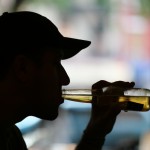
The NHS Information Centre have published their annual series of reports about alcohol use and misuse. The reports cover a range of issues including drinking habits and behaviours among adults (aged 16 and over) and school children (aged 11 to 15), drinking-related ill health and mortality, affordability of alcohol, alcohol related admissions to hospital and alcohol-related costs.
The report finds that there is a long-term downward trend of the proportion of adults and children who reported drinking in the week prior to being interviewed:
- In 1998 75% of men and 59% of women drank in the week prior to interview compared to 68% of men and 54% of women in 2010
- 13% of secondary school pupils aged 11 to 15 reported drinking alcohol in the week prior to interview in 2010 compared with 18% of pupils in 2009 and 26% in 2001
The attitudes that school children have towards drinking seem to have changed in recent years:
- In 2010 32% thought it was okay for someone of their age to drink once a week compared to 46% in 2003
- Similarly 11% of pupils thought that it was OK for someone of their age to get drunk once a week compared to 20% who thought that in 2003
Other headline figures from the report are:
- In 2010/11 there were 198,900 admissions where the primary diagnosis was attributable to the consumption of alcohol. This is a 2.1% increase since 2009/10 when there were 194,800 admissions of this type and a 40% increase since 2002/03 when there were around 142,000 such admissions
- In 2010/11, there were 1,168,300 alcohol related admissions to hospital based on the broad measure (primary and secondary diagnoses). This is an increase of 11% on the 2009/10 figure (1,056,900) and more than twice as many as in 2002/03 (510,700). Comparisons over time in the broad measure are complicated by changes in recording practices over the period. In order to estimate the trend once changes in recording practices are accounted for, a method to adjust the national figures has been devised. Adjusted figures show a 49% increase from an estimated 783,300 in 2002/03 but a 3% decrease from 1,208,100 in 2009/10
- In 2011, there were 167,764 prescription items for drugs for the treatment of alcohol dependency prescribed in primary care settings or NHS hospitals and dispensed in the community. This is an increase of 4.7% on the 2010 figure (160,181) and an increase of 63% on the 2003 figure (102,741)
- The Net Ingredient Cost (NIC) of these prescription items was £2.49 million in 2011. This is an increase of 3.3% on the 2010 figure (£2.41 million) and an increase of 45% on the 2003 figure (£1.72 million)
Link
Statistics on Alcohol: England, 2012 (PDF). NHS Information Centre, 31 May 2012.

It will be interesting to see what happens to the incidence of problem drinking once the school age children who seem, at least for now, more abstentious reach adulthood. I wonder to what extent the economic climate has impacted on recent alcohol consumption..
Cheers (no pun intended)
Mark.